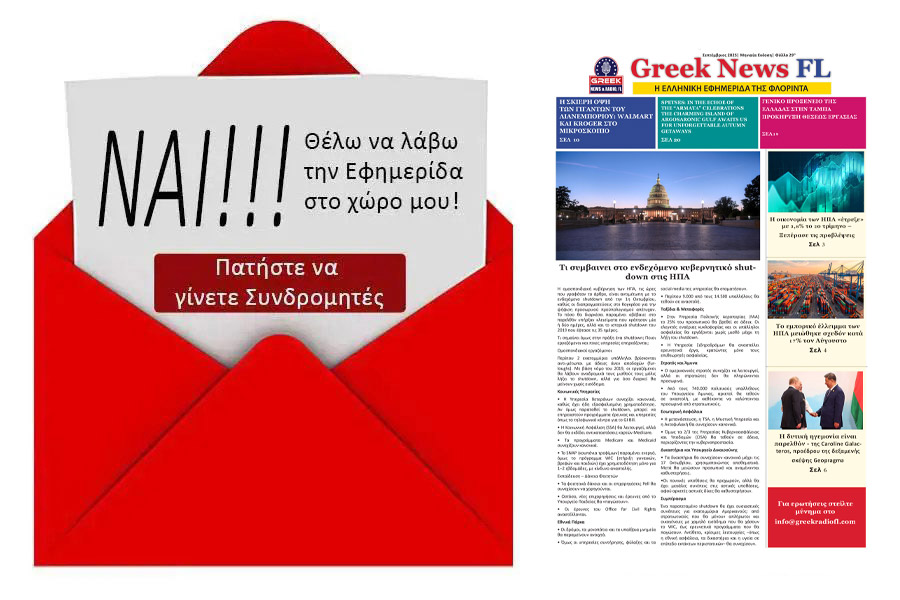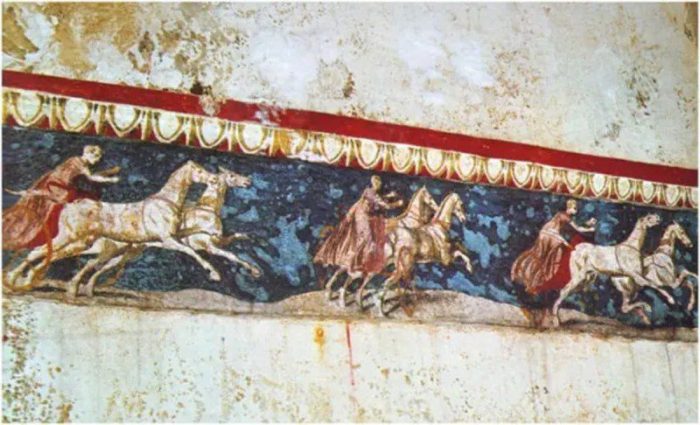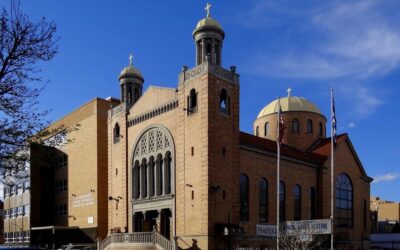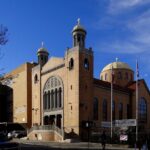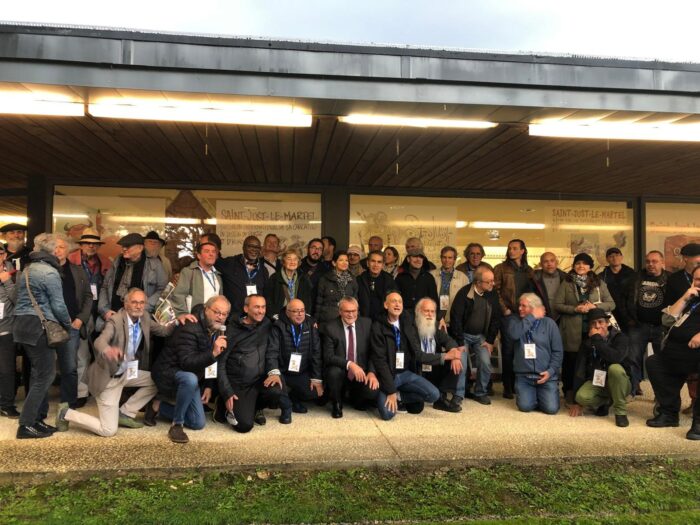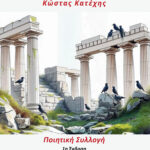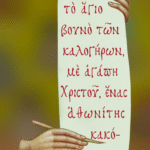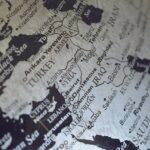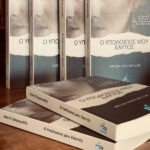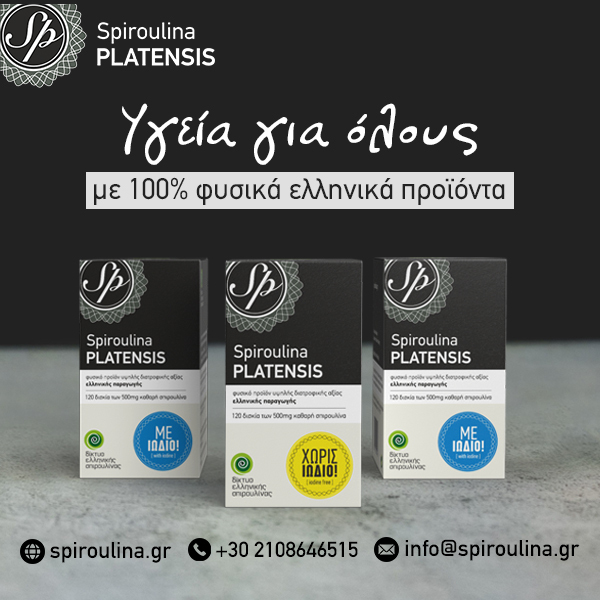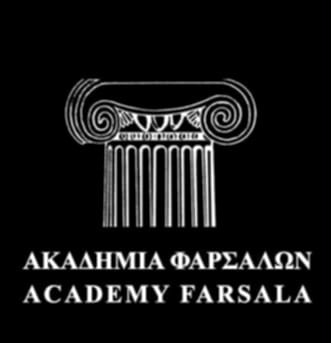Η συνέχεια του άρθρου
Ptolemaeus. 13. Of Alexandria, surnamed Chennus, in William Smith, A Dictionary of Greek and Roman biography and mythology. At Perseus Digital Library.
Another entry in the Suda names a Hephaistion of Alexandria as a grammarian, but it is not clear if he had any connection with Chennos:
“Hephaistion of Alexandria. Grammarian. He wrote a Handbook on metres and various works on metre; On Confusions in Poems; Solutions to Difficulties in Comedy; Solutions in Tragedy; and very many other works. Also the scansions of metres.”
Ἡφαιστίων, eta, 659, in Greek with an English translation at Suda On Line.
- Photios
Photios I (Φώτιος, circa 810/820 – 893 AD), also known as Photios of Constantinople, and by the Eastern Orthodox Church as Saint Photios the Great (Άγιος Φώτιος, or Φώτιος Α΄ ο Μέγας), was the Ecumenical Patriarch of Constantinople 858-867 and 877-886. His Bibliotheka (Βιβλιοθήκη, Library), also known as Myriobiblos (Μυριόβιβλος, Ten thousand books), is a collection of reviews, summaries and extracts of 279 ancient books, around half of which are now lost. Each of the books is usually referred to by a codex number. Ptolemy Hephaistion’s New History has the codex number 190.
- Photios on Ptolemy Hephaistion’s New History
The most complete English translation of Bibliotheka has been published online by Roger Pearse, from J. H. Freese’s translation (codices 1-165), and his own rendering of René Henry’s French translation (codices 166 onwards), with amendations from N. G. Wilson’s translation (see the list of texts and translations in note 4):
See: Photius of Constantinople, The Bibliotheca, Codex 190, Ptolemy Chennus, New History. At The Tertullian Project by Roger Pearse.
I have revised Henry’s punctuation in the quote concerning Helena to avoid the confusing colons and semi-colons beloved by some translators of ancient works.
- Texts and translations of Ptolemaios Chennos in Bibliotheka
“… elle peignit la bataille d’Issus au sommet de son talent”.
Bibliothèque de Photius, Codex 190 Ptolémée Chennus, Nouvelle Histoire. Greek text and French translation at remacle.org by Philippe Remacle et al.
The source of the French translation is not cited, but appears to be that by René Henry.
René Henry (1910-1978), Photius: Bibliothèque. Parallel Greek and French text. Published in 8 volumes by Société d’Édition les Belles Lettres, Paris, 1959-1991.
See also:
Photios, Bibliotheca. PDF document at khazarzar.skeptik.net. The original text in Greek without commentary or notes. The passage concerning Helena the painter is on page 161.
This document was originally available at the website of the University of the Aegean, Mytilene, but appears to be no longer online there. The codices are not numbered or titled, and the entire text is presented as one continuous paragraph, making it difficult to read or search for particular passages.
The Latin translation of Bibliotheka by the Jesuit scholar André Schott (Latin, Andreas Schottus, 1552-1629) of Antwerp:
Andreae Schotti Antuerpiani, Photii, Bibliotheca. Augsburg, 1606. At the Internet Archive.
The reference to Helena the painter, Codex CXC, section 248, on page 185:
“Helena quoque in hunc censum refertur illa pingendi perita, Timonis Aegyptij filia, quae fuis temporibus gestum Issicum bellum penicillo pinxit, et in Pacis templo à Vespasiano imperatore collocata pictura est.”
The Greek text, edited by the Berlin-born philologist August Emmanuel Bekker (1785-1871):
Immanuel Bekker, Photii, Bibliotheca. Georg Reimer, Berlin, 1824. Codex 190 on pages 146-153. The reference to Helena the painter on page 149, right column, lines 29-33.
Some of the Greek text is included in Rudolf Hercher’s article on Chennos, although he does not discuss Helena the painter:
Rudolf Hercher (1821-1878), Über die Glaubwürdigkeit der neuen Geschichte des Ptolemaeus Chennus (On the credibility of the New History of Ptolemaeus Chennus). Jahrbücher für classische Philologie, erster Supplementband, pages 269-293. B. G. Teubner, Leipzig, 1855-1856. At the Internet Archive.
John Henry Freese (1852-1930) planned a 6-volume English translation of the Bibliotheka. However, only the first volume, containing codices 1-165, was ever published. One wonders how far he reached with the task of translation, and whether his manuscripts are stored somewhere.
- H. Freese, The Library of Photius, Volume I. Society for Promoting Christian Knowledge (SPCK), London, and The Macmillan Company, New York, 1920. At the Internet Archive.
Nigel Guy Wilson has more recently produced English translations of selected codices, but unfortunately not including Ptolemy Hephaistion.
- G. Wilson, Photius: The Bibliotheca. Duckworth, London, 1994.
First published in Italian as Fozio: Biblioteca. Italian translation by Claudio Bevegni. Biblioteca Adelphi, Milan, 1992.
- Parents of ancient artists
The names of Greek artists mentioned in ancient inscriptions and books often appear with those of their fathers, for example “Cephisodotus, the son of Praxiteles” (Pliny the Elder, Natural history, Book 36, chapter 4). It is considered by many modern scholars that such mentions of the parent or child of an artist (usually the father or son; brothers are also sometimes mentioned) inferred that they too were artists. In some cases this has led to the construction of entire genealogies for families of artists, often purely conjectural (see, for example, Skopas). As with other professions, there appears to have been a tradition of children following the trade of their artist fathers (priesthoods and other offices such as that of heralds were also often hereditary). On the other hand, it was quite usual in inscriptions that people were conventionally mentioned as “son of…” or “daughter of…”, as we use surnames of family names today, without necessarily implying a connection in their professions.
- Helena’s Battle of Issos
Helena (helena-bio-2), in William Smith, A Dictionary of Greek and Roman biography and mythology. At Perseus Digital Library.
The dictionary entry does not state the source of the translation. Neither does it claim that the “Alexander Mosaic” is a reproduction of Helena’s painting, rather it states:
“It is supposed by some scholars that the well-known mosaic found at Pompeii is a copy of this picture, while others believe it to represent the battle at the Granicus, others that at Arbela. All that can be safely said is, that the mosaic represents one of Alexander’s battles, and that in all probability the person in the chariot is Dareius. (Müller, Archäol. d. Kunst, § 163. n. 1, 6.)”
The reference is to: Karl Otfried Müller and Friedrich Gottlieb Welcker, Handbuch der Archaeologie der Kunst, No. 163, 6, pages 172-173. Dritte Auflage, Zweiter Abdruck, Albert Heitz, Munich, 1878. At the Internet Archive. Very academic, terse, and mostly outdated.
See also: Beth Hartley, Novel research: Fiction and authority in Ptolemy Chennus. PhD thesis, University of Exeter, 2014, pages-93-94. PDF document. Hartley includes the Greek text of the passage and her own English translation: “… she painted the Battle of Issus at that very time.”
- Mosaic artists as copyists
Although the tesserae of the “Alexander Mosaic” are described as being of “local stone”, it is not known where or by whom the work was made. There appear to have been a number of mosaic artists working around the Greek and Roman world in the 2nd – 1st century BC (see, for example, Dioskourides of Samos), and at least some of them may have been itinerant, travelling to work on commissions to decorate palaces, villas and public buildings in various places.
In order to create such large, finely detailed mosaics, the artists and assistants in their workshops would have required detailed colour sketches from which to work. If the “Alexander Mosaic” is a copy of a painting, the mosaicist or some other artist, perhaps specializing in such work, would presumably have had to see the original in order to make a copy as a painting or sketches. It is also possible that good painted copies of much-admired paintings also existed at other locations, perhaps decorating the houses of the wealthy.
It bothers this author, who is also an artist in several media including mosaic, that ancient mosaicists are seen by some scholars merely as copyists of paintings, admired for their technical skills but denied creative originality. There is also no reason why mosaic makers could not also have been painters and vice versa. Pliny the Elder, the only ancient author to name a mosaic artist, praises the work of Sosos (Natural History, Book 36, chapter 60), Roman imitations of whose “asarotos oikos” (unswept house) still exist, but nowhere does he mention mosaics as copies of paintings. However, as in the case of the Dioskourides works from Pompeii, the existence of a number of mosaics at far-flung locations, depicting the same subject with similar or almost identical compositions, must be evidence of a common original. Whether the originals were mosaics, paintings or even sculptures is perhaps a moot point.
Συνεχίζεται

